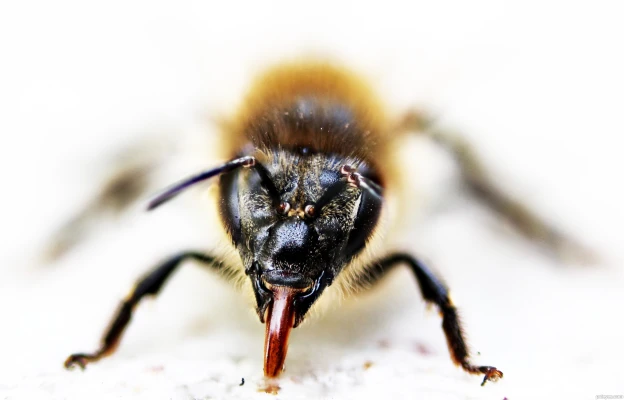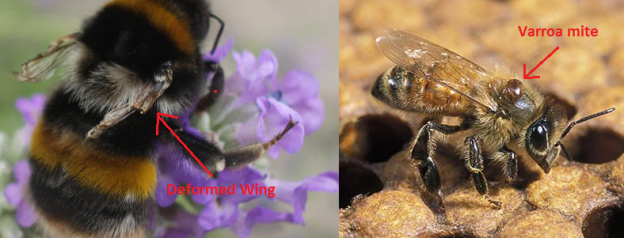All over the UK, farmers are paid to set aside fallow land for flowers to grow and even to sow mixes of wildflowers in their field margins, all in an effort to boost dwindling numbers of wild bees, as well as birds and biodiversity in general. These are much needed conservation measures to tackle the devastating problem of losing the most vital pollinator groups (bumblebees and solitary bees) that help sustain the food production of Britain. But how do these agri-environment schemes (aka environmental stewardships, ESSs) work, what are the problems with them, and how must they be improved?
Plight of the Bees
The pollinators- bumblebees, honeybees, solitary bees, butterflies (and many others) are arguably the most important animal group, and one we should be most bothered about. A third of all the fruit and veg you see in the supermarkets would not exist if it were not for the pollinating efforts of bees et al., and many of the flowers of plants and trees would not be able to reproduce, and would hence disappear. However, there is no one perfect species of beethat can pollinate anything (although honeybees are renowned generalists), so attention must be given to boosting general bee diversity, with perhaps a focus on the most efficient pollinators, and generalists that can access many flower structures (although generalists are typically short-tongued so can only access ‘open’ structures- however these species are usually quite common).
Bees have had it pretty rough during the last few hundred years of anthropogenic development. Although several land-use changes wrought by humans did them some good, such as clearing of forest to allow mid-successional habitat (e.g. wildflower meadows- perfect for bees!) to flourish and the growth of fields of fodder crop such as red clover (also brilliant for bees)- this was to be short lived! At the advent of the 2nd World War, our native biodiversity suffered the intensification of agriculture in Britain and in much of the rest of Europe (another evil that can be attributed to Hitler’s long list!). Since crop production needed to be maximised to feed a war-torn nation, small farms turned into monocultures with no semi-natural habitat or flowers; pesticides replaced other forms of pest management, and planting fodder crops to feed livestock (which also happen to be bumblebees’ preferred food plant) became a thing of the past.

Nowadays, there are even more evils that are possibly killing off our bees. Stressors such as competition from non-native bee species, increased transmission of disease, climate change, and neonicotinoid pesticide misuse have all been implicated. Fortunately, the governments of the UK and EU recognised the threat to our native fauna and food production, and have a few schemes in place to help conserve the plighted pollinators…
Stewards of the Land
The idea of Environmental Stewardship Schemes (ESSs) is to encourage farmers and landowners to aid the conservation effort in England, in exchange for farming subsidies- aka cash- for either implementing a conservation measure, or by not using an intensive piece of management. Among the choices (graded on a points system) open to farmers are hedgerow planting, sowing mixes of wildflowers, planting fodder crops and leaving margins of fields without crops or pesticide sprays (so flowering weeds and rare plants can grow). So farmers and land-owners make up their minds on whether a cash subsidy (and the bonus to the ecosystem services they benefit from) will be more profitable than using the land for crops still.
Unfortunately, research has shown that even farms using the higher level of the stewardships (HLSs) were not seeing any increase in flowering plant diversity, and subsequently no increase in bee numbers or species. So what exactly is going wrong?
Why the Schemes Don’t Work (and How to Improve Them)
The “higher level” stewardship schemes (HLS) involve more hands on options such as the sowing of wildflowers and pollen/nectar plant seed mixes. However studies are reporting that whilst bees are visiting the flowers sown from these mixes, they strongly prefer wild occurring flowers which aren’t included in the schemes. This means that the so-called “entry level” stewardships (ELS) are having an equal to greater positive effect on the bee community as these schemes usually involve margins that are allowed a natural community of wildflowers to establish, which are those preferred by the majority of farmland bees.

Whilst the pollen and nectar and wildflower seed mixes do a good job at increasing the numbers of a narrow suite of bumblebee species, there is little evidence of effects on species richness (diversity) or on solitary bee numbers (despite that group making up the majority of species present in farmland!). The solitary bees much prefer flowers in the families Asteraceae (such as Cat’s Ear and False Mayweed) and Apiaceae (like Cow Parsley), but these mostly grow wild on verges which explains the success of Entry-level Stewardships. To improve their effectiveness, these wildflower mixes used in ESSs should contain more of these flowers preferred by solitary bees, as they are dominated by Fabaceae flowers (beans, peas and clovers), which are only good for bumblebees. Wildflower communities also take a while to establish (over years in some cases), and different flowers can benefit different life stages of the same bumblebee species.
Unfortunately the troubles don’t simply lie at the scale of the methods of conservation. Farmers are offered around £30 per hectare in Entry-Level, which is often not an economical way of using arable land. Another issue is the farmers themselves can choose from the entire array of options on offer, which may seem like a rather blind approach to nature conservation if some ecosystem services are particularly lacking (e.g. natural insect pest control), and the bird or mammal nesting options are chosen. Infact 65% of the entry-level stewardships in 2009 included hedgerows with options for cutting, and whilst this is great for the natural enemy population (beetles, hoverfly larvae etc.) near the edge of the field, these options that don’t particularly favour pollinators.
Final Word
The future for these currently flawed, but potentially effective conservation schemes is uncertain. More research and development on the flower mixes used to benefit bees (and other important taxa, such as beetles) and a more systematic approach to the combinations of conservation measures offered is needed. And since these schemes are funded in part by the European Union (with £400 million paid to farmers annually), a vigilance from environmentally-savvy politicians is needed to ensure these subsidies carry on post-Brexit. The AES schemes cover an impressive 66% of agricultural land, which is therefore 46% of the entire land in the UK! Surely for nature to flourish, we must direct more attention to improving these schemes to best benefit our pollinators, crop pest natural enemies, farmland birds, mammals, and general biodiversity in the UK.
Further Reading
Carvell, C., Meek, W.R., Pywell, R.F., Goulson, D. and Nowakowski, M., (2007) Comparing the efficacy of agri‐environment schemes to enhance bumble bee abundance and diversity on arable field margins. Journal of applied ecology, 44(1), pp.29-40. [Available from: http://onlinelibrary.wiley.com/doi/10.1111/j.1365-2664.2006.01249.x/full%5D
Wood, T.J., Holland, J.M. and Goulson, D., (2015). Pollinator-friendly management does not increase the diversity of farmland bees and wasps. Biological Conservation, 187, pp.120-126. [Avaiable from: http://www.sciencedirect.com/science/article/pii/S0006320715001755%5D
http://www.gwct.org.uk/farming/advice/stewardship-schemes/countryside-stewardship/
















